The Heart of Your Engine: Your Ultimate Guide to Choosing a Crankshaft Supplier
Frankly speaking, the crankshaft is the undisputed backbone of any internal combustion engine. It’s the component that endures immense rotational forces, converting the violent, linear motion of the pistons into the smooth, usable torque that powers your vehicle. It’s a work of art forged in fire and machined to microscopic precision. Given its critical role, choosing the right crankshaft supplier isn't just a purchasing decision; it's a foundational choice that dictates your engine's performance, reliability, and, ultimately, its lifespan.
But let's be honest, the market is flooded with options. From massive OEM manufacturers to boutique custom shops, how do you navigate the noise and find a partner you can trust? Have you ever wondered what truly separates a world-class crankshaft from one that's destined for premature failure? This guide is designed to pull back the curtain. We'll dive deep into the materials, the manufacturing processes, and the critical questions you must ask to ensure you're not just buying a part, but investing in peace of mind.
What Truly Defines a 'Good' Crankshaft? The Core Principles
Before you can even begin to evaluate a supplier, you need a solid understanding of what makes a crankshaft exceptional. It's a complex interplay of material science, engineering design, and manufacturing excellence. A failure in any one of these areas can have, shall we say, catastrophic consequences for your engine block. In my experience, focusing on these fundamentals is the first step toward making an informed decision.
Material Matters: Billet vs. Forged vs. Cast
The material is the very soul of the crankshaft. The choice here directly impacts strength, durability, and cost. There are three primary types you'll encounter:
- Cast Crankshafts: These are the most common type found in standard passenger vehicles. They are made by pouring molten iron or steel into a mold. It's a cost-effective process, but the resulting grain structure of the metal is non-directional, making it inherently weaker than forged or billet options. For a stock engine rebuild or a low-horsepower application, a quality cast crank is often perfectly adequate.
- Forged Crankshafts: This is a significant step up. A forged crank starts as a heated steel billet that is then pounded and pressed into its rough shape using immense pressure. This process aligns the grain structure of the steel, following the contours of the crankshaft. The result? A component that is significantly stronger and more resistant to torsional flex and fatigue. For most high-performance street and moderate racing applications, a forged crankshaft is the go-to choice, offering a fantastic balance of strength and cost.
- Billet Crankshafts: This is the pinnacle of crankshaft construction. A billet crank is machined from a solid, cylindrical bar (a "billet") of high-grade steel, typically 4340 chromoly or even more exotic alloys. There is no forging; the entire piece is carved out on a CNC machine. This process allows for the most precise designs, optimized counterweights, and the use of the highest quality, most uniform steel. It's the strongest, most durable option, but also the most expensive. For extreme racing, massive horsepower builds, or one-off custom engines, billet is the only way to go.
The Science of Design: Counterweights, Journals, and Balance
A lump of strong metal isn't enough. The design is what allows it to function harmoniously within the engine. The counterweights, for instance, are not just random chunks of metal; they are precisely calculated to offset the mass of the piston and connecting rod assembly as it flies up and down. A properly balanced crankshaft is essential for a smooth-running engine and to prevent destructive vibrations that can shatter other components at high RPM.
Then you have the journals—the highly polished surfaces where the connecting rods (rod journals) and the main bearings (main journals) ride. The surface finish on these journals must be incredibly smooth, measured in micro-inches, to allow a thin film of oil to support the load. Any imperfection can disrupt this oil film, leading to bearing failure. It's worth noting that many top-tier suppliers also nitride or heat-treat their cranks to create a super-hard surface layer on the journals for superior wear resistance.
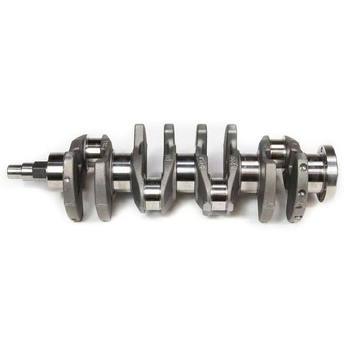
How to Properly Vet a Potential Crankshaft Supplier
Now that you know what to look for in the product, how do you evaluate the people making it? Finding a great supplier is about building a partnership, especially if you're venturing into custom or high-performance territory. This is where you need to learn how to choose a crankshaft manufacturer that aligns with your project's needs.
Beyond the Brochure: Assessing Technical Capabilities
Any supplier can create a glossy catalog. You need to dig deeper. Ask about their manufacturing equipment. Do they use modern, multi-axis CNC machining centers? This is crucial for holding tight tolerances and creating complex, optimized designs. What about their quality control processes? Ask about their inspection tools—do they use Coordinate Measuring Machines (CMMs) to verify every dimension? Do they perform magnafluxing (magnetic particle inspection) on every single crankshaft to check for invisible cracks or material flaws?
Furthermore, assess their engineering support. Can you speak directly with an engineer about your application? A top-tier supplier will have a team that can help you with design considerations, material selection, and balancing specifications. They should be a resource, not just an order taker.
The Proof is in the Pudding: Certifications and Case Studies
Reputation is built on results. Look for suppliers who are proud to showcase their work. Do they have industry-standard certifications, like ISO 9001? This indicates a formal commitment to quality management systems. Don't be afraid to ask for case studies or testimonials, especially from customers with applications similar to yours. If they supply parts to successful race teams, that's a powerful endorsement of their product's ability to perform under the most demanding conditions.
Communication and Support: Are They a Partner or Just a Vendor?
This might be the most overlooked, yet most important, factor. How do they communicate? Are they responsive to your emails and phone calls? Are they transparent about lead times and potential delays? For a complex project, clear, consistent communication is non-negotiable. A supplier who invests time in understanding your needs and keeping you informed is a true partner who is invested in your success.
The Spectrum of Crankshafts: From OEM Replacement to Full-Race
Crankshafts are not a one-size-fits-all product. A reliable supplier will typically offer a range of products tailored to different applications and budgets. Understanding this spectrum helps you pinpoint exactly what you need.
Stock and OEM Replacement Crankshafts
For the daily driver or a standard engine rebuild, the goal is reliability and meeting factory specifications. These are often cast or hypereutectic crankshafts designed to perform exactly like the original part. A good supplier will ensure these cranks are dimensionally perfect, properly balanced to OEM specs, and ready to install for tens of thousands of miles of trouble-free service.
High-Performance and Stroker Crankshafts
This is where things get exciting. When you're looking for high-performance crankshafts for sale, you're entering the world of forged and billet materials. "Stroker" cranks have an increased stroke—the distance the piston travels—which increases engine displacement and, consequently, torque and horsepower. These cranks are designed with enhanced features like lightened counterweights for quicker revving, gun-drilled main journals to reduce rotational mass, and radiused journal fillets for increased strength at critical stress points. Many experts agree that a well-chosen stroker crank is one of the most effective ways to significantly boost an engine's power output.
The World of Custom Crankshaft Manufacturing
What if you're building a vintage race engine where parts are no longer available? Or a completely unique prototype engine? This is where custom manufacturing comes in. A specialized supplier can work from an old blueprint, a damaged sample part, or even just a CAD file to create a one-of-a-kind crankshaft. This process involves extensive engineering, programming, and meticulous machining. It's a testament to the supplier's ultimate capability and a service that separates the true specialists from the mass producers.
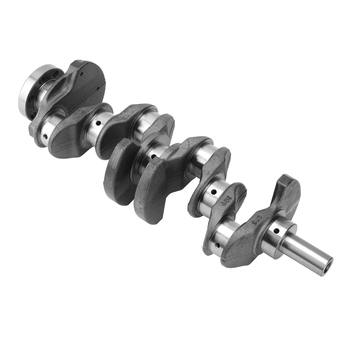
Common Pitfalls to Avoid When Selecting a Supplier
Choosing the wrong supplier can be a costly and frustrating mistake. I've seen it happen, and it's almost always due to a few common, avoidable errors. Being aware of these pitfalls can save you a world of trouble.
The "Too Good to Be True" Price Tag
Everyone loves a bargain, but with critical engine components, an unusually low price should be a major red flag. Quality materials, precision machining, and rigorous quality control all cost money. A supplier cutting corners on any of these to offer a rock-bottom price is passing the risk on to you. The potential savings are minuscule compared to the cost of a catastrophic engine failure that destroys your entire block, pistons, and rods.
Ignoring the Supply Chain and Lead Times
Especially in today's global market, understanding a supplier's supply chain is vital. Where do they source their raw steel? Are they reliant on a single source that could cause delays? Be sure to get a realistic lead time for your crankshaft, particularly if it's a custom or forged piece. A good supplier will be transparent about their production schedule. A vague or overly optimistic timeline can leave your project stalled for months.
Overlooking Post-Sale Support and Warranty
What happens after you make the payment? A reputable company will stand behind its product. Inquire about their warranty policy. What does it cover, and for how long? What is the process for making a claim? A supplier who is confident in their product will have a clear and fair warranty. A lack of one suggests they don't have much faith in their own work.
The Future of Crankshaft Technology
The world of engine technology is always evolving, and the humble crankshaft is no exception. Forward-thinking suppliers are constantly exploring new frontiers to push the boundaries of performance and reliability.
Lighter, Stronger Materials
While 4340 steel is the current king, research into even more advanced steel alloys, metal matrix composites, and surface treatments is ongoing. The goal is always the same: increase strength while reducing rotational mass. A lighter rotating assembly allows the engine to rev faster and respond more quickly to throttle inputs.
Advanced Manufacturing Techniques
Interestingly enough, techniques like additive manufacturing (industrial 3D printing) are being explored for creating complex internal oiling passages or for rapidly prototyping new designs. While we're not yet 3D printing billet-strength cranks for race engines, the technology is evolving rapidly and could revolutionize custom manufacturing in the coming years.
Ultimately, the relationship you build with your crankshaft supplier is the foundation of your engine build. By arming yourself with knowledge, asking the right questions, and prioritizing quality over cost, you can forge a partnership that will power your passion for years to come. The heart of your engine deserves nothing less. So, what's the first question you'll ask your next potential supplier?
For more detailed information, please visit our official website:Crankshaft supplier
About the author: Marcus "Rod" Peterson is a veteran engine builder and mechanical engineer with over 25 years of experience in the high-performance and racing industry. He has designed and built engines for everything from championship-winning drag cars to meticulously restored vintage classics. Marcus is passionate about sharing his deep knowledge of material science and precision manufacturing, helping enthusiasts and professionals alike make informed decisions that unlock true performance and reliability.
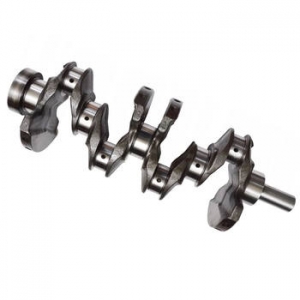 The Heart of Horsepower: How t
The Heart of Horsepower: How t
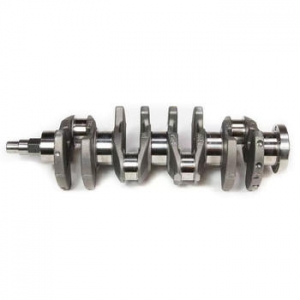 The Heart of Your Engine: Your
The Heart of Your Engine: Your
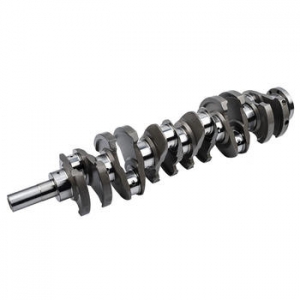 The Heart of the Engine: How t
The Heart of the Engine: How t
 The Unseen Powerhouse: Unveili
The Unseen Powerhouse: Unveili
